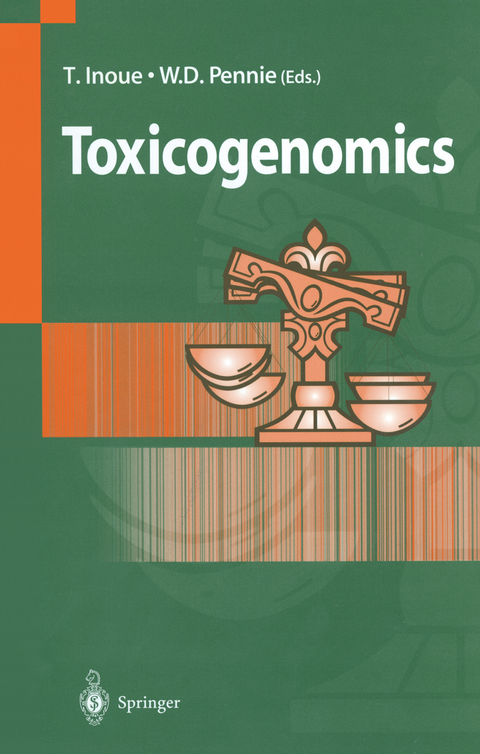
Toxicogenomics
Springer Verlag, Japan
978-4-431-67001-8 (ISBN)
Introductory Keynotes.- Introduction: Toxicogenomics — A New Paradigm of Toxicology.- Toxicogenomics in Genome Science World.- Application of Transcript Profiling to Mechanism-Based Toxicology.- Strategy for Toxicogenomics.- Application of DNA Microarrays for Predicting Toxicity and Evaluating Cross-Species Extrapolation.- Use of Reverse Genetics and cDNA Arrays to Understand ‘Dioxin’ Toxicity.- Technical Development (Genomics and Proteomics).- Applications of Gene Arrays in Toxicology.- The ToxExpress™ Module: Applying Gene Expression Data to Predictive Toxicology.- Taming the Mass of Microarray Data: Systematic Approaches to Gene Expression Analysis.- Applications of ProteinChip® Systems in Toxicological Assessment.- Experimental Applications (1) — Oncology Research.- Toxicogenomics: Making Progress by Maintaining a Focus on the Fundamentals of Toxicology.- A Microarray Analysis of Differential Gene Expression Associated with the Development of Doxorubicin Resistance in Breast Carcinoma.- Screening Trial of Cancer Chemopreventive Agent by Using Combination of DNA Chip Technology and Cell Signaling Network DataBase (CSNDB).- Application of Methacarn Fixation for Genetic Analysis in Microdissected Paraffin-Embedded Tissue Specimens.- Experimental Applications (2) — Xenobiotic Metabolism.- ABC Transporters: A New Approach to Toxicogenomics.- SXR and the Xenobiotic Response.- Experimental Applications (3) — Endocrine Disruptor Research.- C. elegance as a Tool for Environmental Toxicology.- Development of the Test Method for Detection of Endocrine-Disrupting Activity Using DNA Microarrays.- Application of cDNA Microarray for Uterotrophic Assay.- Large-Scale Gene Expression Analysis for Evaluation of Endocrine Disruptors.- Analysis of Toxicogenomic Responseto Endocrine Disruptors in the Mouse Testis.- Gene Expression Profiling to Identify Mechanisms of Male Reproductive Toxicity.- Future Prospects and Risk Assessment.- Toxicology and Genetic Toxicology in the New Era of “Toxicogenomics”: Impact of “-omics” Technologies.- Use of Genomics in Mechanism Based Risk Assessment.- Chemogenomics for Predictive Drug Assessment.- Reverse Toxicology as a Future Predictive Toxicology.
| Erscheint lt. Verlag | 2.1.2013 |
|---|---|
| Zusatzinfo | XXIII, 228 p. |
| Verlagsort | Tokyo |
| Sprache | englisch |
| Maße | 155 x 235 mm |
| Themenwelt | Medizin / Pharmazie ► Medizinische Fachgebiete ► Pharmakologie / Pharmakotherapie |
| Medizin / Pharmazie ► Pharmazie | |
| ISBN-10 | 4-431-67001-7 / 4431670017 |
| ISBN-13 | 978-4-431-67001-8 / 9784431670018 |
| Zustand | Neuware |
| Informationen gemäß Produktsicherheitsverordnung (GPSR) | |
| Haben Sie eine Frage zum Produkt? |
aus dem Bereich


